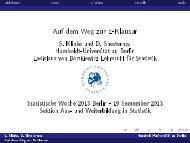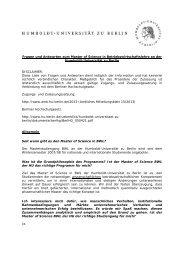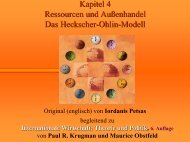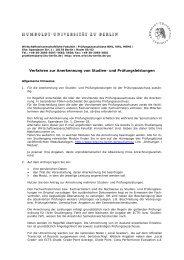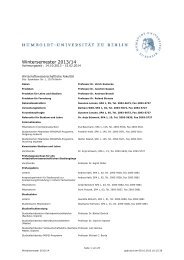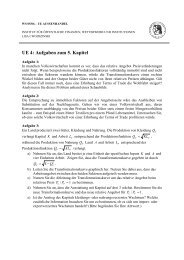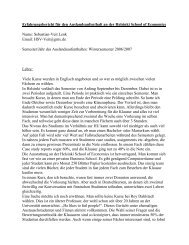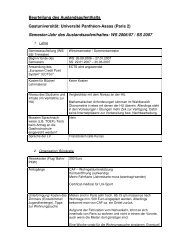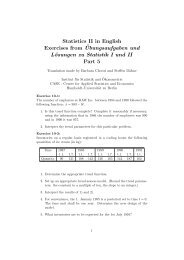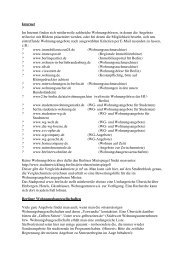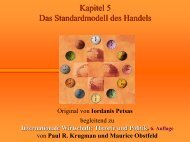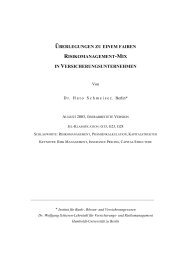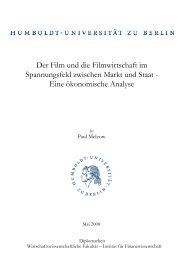Master Thesis - Humboldt-Universität zu Berlin
Master Thesis - Humboldt-Universität zu Berlin
Master Thesis - Humboldt-Universität zu Berlin
Create successful ePaper yourself
Turn your PDF publications into a flip-book with our unique Google optimized e-Paper software.
1 Abstract<br />
In this paper we develop a dynamic stochastic general equilibrium (DSGE)<br />
model for an open economy where the uncovered interest rate parity is not<br />
required to hold. We extend the open economy DSGE model of De Walque,<br />
Smets and Wouter (2005) by incorporating stochastic fiscal policy into the<br />
model. The model includes several features of market rigidities. The focus<br />
is on explaining the theoretical model thoroughly and analyzing the impulse<br />
response function under calibrated parameters in Dynare.<br />
Keywords: DSGE model; New open economy; Interest rate parity; Real and<br />
Nominal Rigidities<br />
2 Introduction<br />
Our motivation for the model is to construct a DSGE open economy model<br />
with sticky prices and wages to link the euro area and the US using specific<br />
variables. The model is a version of the ”New Open Economy Model”<br />
(NOEM), and contains the salient features of its class with respect to the<br />
optimizing behaviour of the microeconomic units, firms and households, sluggishness<br />
of prices and wages, goods aggregation, exchange rate and current<br />
account, and the monetary authority. Hereafter, domestic intermediate and<br />
importing monopolistically competitive firms set prices and households set<br />
wages in a Calvo mechanism. This helps to explain inflation inertia and output<br />
persistence. A representative aggregator combines complete sets of differentiated<br />
types of labor, intermediate and imported goods and distributes<br />
the final consumption goods. Capital accumulation is subject to adjustment<br />
costs, so is capital intensity and domestic-foreign inputs ratio. Monetary<br />
policy intervenes in the form of interest rate setting rules; money is not explicitly<br />
modeled but assumed to be embodied in the utility function.<br />
The domestic block emulates the economy from Smets and Wouters’ previous<br />
work on the closed economy, but with a reduced number of stochastic shocks.<br />
4



